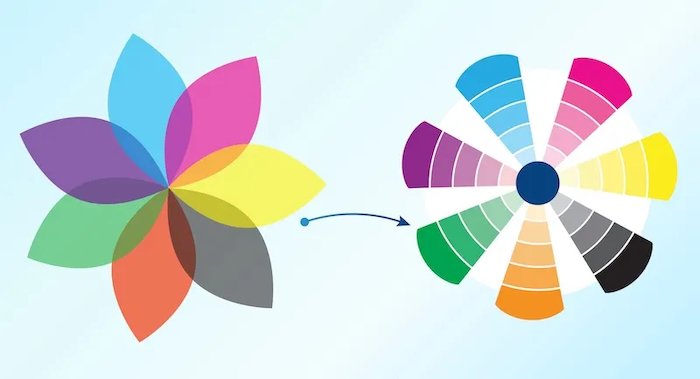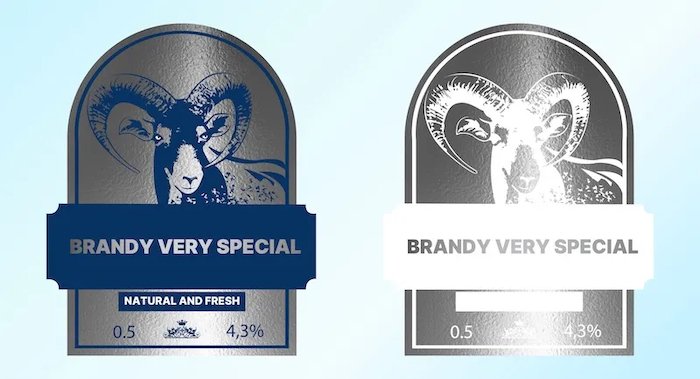
Adobe has announced a new version of its Adobe PDF Print Engine, or APPE, now up to v7.0, with a number of prepress processes now moved directly into the rendering pipeline in the RIP itself, including multi-color transparency blending and variable data handling.
At the same time, Adobe has also introduced a new platform – Adobe Print Services – which is designed to be used alongside the print engine and carries some of the workload to avoid slowing the RIP down.
The Print Engine is a Software Development Kit that’s sold to OEMs, who will use it as the base when developing their own prepress workflow software. Mark Lewiecki, the senior product manager at Adobe who has been responsible for the print engine since its first version, says, “Print quality is almost a given, but we have a lot of workflow capabilities and flexibility and power to customize the SDK for the different segments of the industry.”
It’s widely used throughout the graphics printing business, in products such as Kodak Prinergy. Agfa Asanti, and so on. Lewiecki adds, “Today there’s 48 certified products. We have a market leading position across all printing segments, including computer to plate, high volume digital production printing, large format, and DTG garment printing.”
This new version has been designed to address the trends within the printing industry, including a shift towards packaging and textiles. Lewiecki says that there’s a need to reduce the skill level required in prepress, noting, “The generation of people that made the transition from analog to digital printing are retiring and being replaced by a new generation that have a different background.” He adds that prepress is moving beyond graphics, pointing out that many digital label presses are being sold to manufacturers, who may lack a prepress background, rather than label printers.
The trend towards shorter run lengths is continuing, but he points out that these jobs still require the same amount of prepress work. This means that printers need more automation to maintain profit levels on those jobs. Consequently for this latest version Adobe has sought to reduce the number of processes required in prepress by moving more of these tasks directly into the RIP. Lewiecki explains, “If we can put them right in the RIP and combine them with the RIP function, there’s an opportunity to eliminate those separate steps and also do them much faster.”
He accepts that this may increase the hardware requirements for the processor, but says, “Reducing the cost and increasing the power are not really mutually exclusive. Yes, new chips are more expensive, but, as soon as the next generation comes out the prices fall back.” He adds, “In some cases, actually doing the function in the RIP takes less RIP time than doing it in the pre-RIP stage.”
Multicolor transparency blending
One of the major new features is the ability to handle multi-color transparency blending directly in the RIP. This is particularly aimed at Extended Color Gamut printing, which uses a fixed inkset, typically including CMYK plus orange, green and violet, as an alternative to using spot colors. This is gaining ground in label and packaging printing, where many brands traditionally favour spot colors to give added vibrancy – and therefore shelf appeal – to their graphics and logos. Most converters would prefer to switch to ECG inksets to avoid having to wash out the spot colors between jobs, saving time and water, and increasing their overall productivity.
This is still a work in progress in flexo printing, where brands want both the cost savings of using ECG inks but with the punchiness of their preferred spot colors. However, the growth of inkjet printing is driving a renewed interest in ECG inksets as most digital presses do only offer a fixed inkset with no options for spot colors.
So adding this feature directly to the Print Engine does make a lot of sense, given the increasing growth in the digital labels and packaging markets. But it’s not so straightforward, as Lewiecki explains further, “The PDF specification describes how to blend transparency in CMYK and RGB and grey, but it’s silent on this subject of blending transparency in N-color spaces. It’s simply not defined. And there is talk of perhaps addressing this in a future version of the PDF spec but how they do so remains to be determined. We’re jumping the gun, we’re not waiting. We’re going to solve it our way. We’ll see if they’re going to adopt an approach similar to ours or whether we’re going to have to change our approach to conform to a standard in the future.

“The challenge, of course, is that blending in CMYK, which is the workaround today, results in a constricted color space. And that’s exactly what we’re doing today. So today, the blending takes place in CMYK, which immediately reduces the gamut, even if the press has those six or seven colors and you’re using your separation in the seven color space, you’ve already constricted the gamut at this stage.”
He says that although the Print Engine did support single stage color management for N-color in v6, there was an exception for the transparent elements. He adds, “Jobs can have elements that are tagged with RGB profiles. This can include the images, but also CMYK profiles, such as a vignette or even a spot color. But by blending the transparency and separating the colors in a single stage, we are using the multicolor profile, which is the profile used to separate for the press, but also now we’re using it for blending.”
The other big feature that the new print engine offers is the ability to merge variable data in-RIP. He says that there’s an increasing demand for barcodes and serial numbers for track and trace requirements. This is already common for many pharmaceuticals and there are good arguments for extending this to other products, such as food packaging. But as he points out, many existing variable data tools were designed for dealing with complex data such as customer preferences that might change the overall layout, which is too complicated for what is a relatively simple use of variable data.
He notes, “Nevertheless, you have to export those as merged pages and then you may need to step and repeat those merged pages and create another PDF file. These are temporary intermediate PDF files that get sent for rendering. Whereas within v7 the data and the template are sent directly to the RIP and there is a design stage, but it doesn’t do any merging. It just specifies how the data will be mapped to the rectangles on the static template and how the data will be formatted, the fonts and so on. But the actual merging, stepping, formatting, and everything else happens inside the RIP at the rendering stage. And eliminating these stages here is a huge benefit.” This results in dramatically smaller file sizes that can then be rendered much quicker.
The new version now also includes in-RIP rendering of Adobe Photoshop and Illustrator job files. This has become necessary because a significant percentage of designers prefer to send their files to their print service provider as native Photoshop or Illustrator files. Lewiecki says this is particularly common in Web-to-Print for Direct-to-Garment uses and forces an extra step to convert those files to PDF. In theory lots of programs should be able to rasterise these files, since Adobe published the specifications for these formats many years ago. But Lewiecki says that some programs do not always do the best job, particularly around multi-color and duotone jobs. He adds, “And we were planning additional things in future versions that will do a better job as well, things like layers and so on.”
The new version also gains the ability to automatically generate bleeds directly in the RIP. This gets around the issue of jobs that come in with the design stopping at the trim line and no bleed around the edges. That in turn means there’s no leeway so if the trimming is a little short then the job is left with an unsightly white line. The obvious solution is to let the design bleed over the trimline to avoid this. There are tools that can automatically create such bleeds but this means adding an extra step at the prepress stage.
Lewiecki says that this issue generates a lot of complaints, adding, “We’re not doing it in all cases. We’re not addressing diagonal lines or patterns or images, but in the straightforward cases of straight edges, curved edges and corners, we’ll be able to essentially duplicate or mirror the pixels at the perimeter.”
Another issue is that of cut lines, which can now be automatically enhanced. This will particularly benefit large format users, where many print jobs will go on to be finished on a digital cutting table. Lewiecki explains, “The cut lines provided in a job often don’t account for the thickness of the blade or rotor, the amount of pressure, the angle, and the tolerance. And there’s a need to dilate that cut line, and that’s what we’re doing as an in-RIP function. Today, it’s often done in Illustrator, which is a manual interactive stage. So that’s the benefit there.”

Adobe has also added the ability to create a white mask directly in the RIP. This is mainly aimed at those jobs that use metallic effects. Lewiecki explains, “The designer may know that there’s a metallic aspect to the job, but they don’t know whether that’s going to be applied as a metallic hot foil or cold foil, or they’re going to be printing on a metallic substrate. So they typically design it as a spot color.”
The new feature builds on the white ink capabilities of Print Engine 6 to automatically generate a white ink mask from the metallic spot color plate. It will minimize waste, and therefore cost, by reducing the amount of expensive white ink that is used. The feature eliminates the need to perform this function post-rendering.
Lewiecki says that this could also benefit some textile applications, adding, “This feature could be used for printing on black T shirts, for example, where you have to create a white ink lay down for the other colors to lift off the black fabric so it could in fact be used there as well.”
In addition to these features, Adobe has also improved the overall performance by exploiting the latest hardware for areas such as boosting the speed of caching, image resampling operations, and multithreaded trapping.
Adobe Print Services
Alongside the new Print Engine, Adobe also announced a new Adobe Print Services platform. This is also sold as an SDK to other software developers and essentially offers additional functions that can work alongside the Print Engine. Lewiecki notes, “In some cases, it’s better to offload a function to the pre-RIP to avoid extra time taken at the RIP.” This includes some of the analysis of the files to determine which algorithms to use within the RIP.
APS uses AI and machine learning capabilities to automate some pre-RIP conversion tasks, including up-sampling images with insufficient resolution, detecting text that has been outlined, and minimizing the processing overhead through intelligent self-configuration. It also includes Adobe libraries for easier access to core capabilities.
APS also includes its own bleed generation, which is designed to complement the in-RIP bleed generation in Print Engine 7 by extending complex patterns, diagonal lines, and photographs. This is based on Adobe’s proprietary Content-Aware fill technology which is already used in Photoshop.
We won’t see APPE 7 in practice until at least next year. Adobe has kept its OEM customers up to date with its progress, having sent them the beta version in April, which will no doubt be followed by further betas in the next few months. However, those OEMs won’t get the final golden master until August, meaning that it will be at least 2026 before the first actual RIPs start appearing. APS is likely to follow shortly after APPE 7.0. That means that we will see a flurry of RIP updates throughout 2026 and into 2027.
In the meantime, readers can find more information on the PDF print engine at adobe.com, and my previous report on the current APPE 6 here.
First published by the Printing and Manufacturing Journal on 7th May 2025. Republished by permission.















